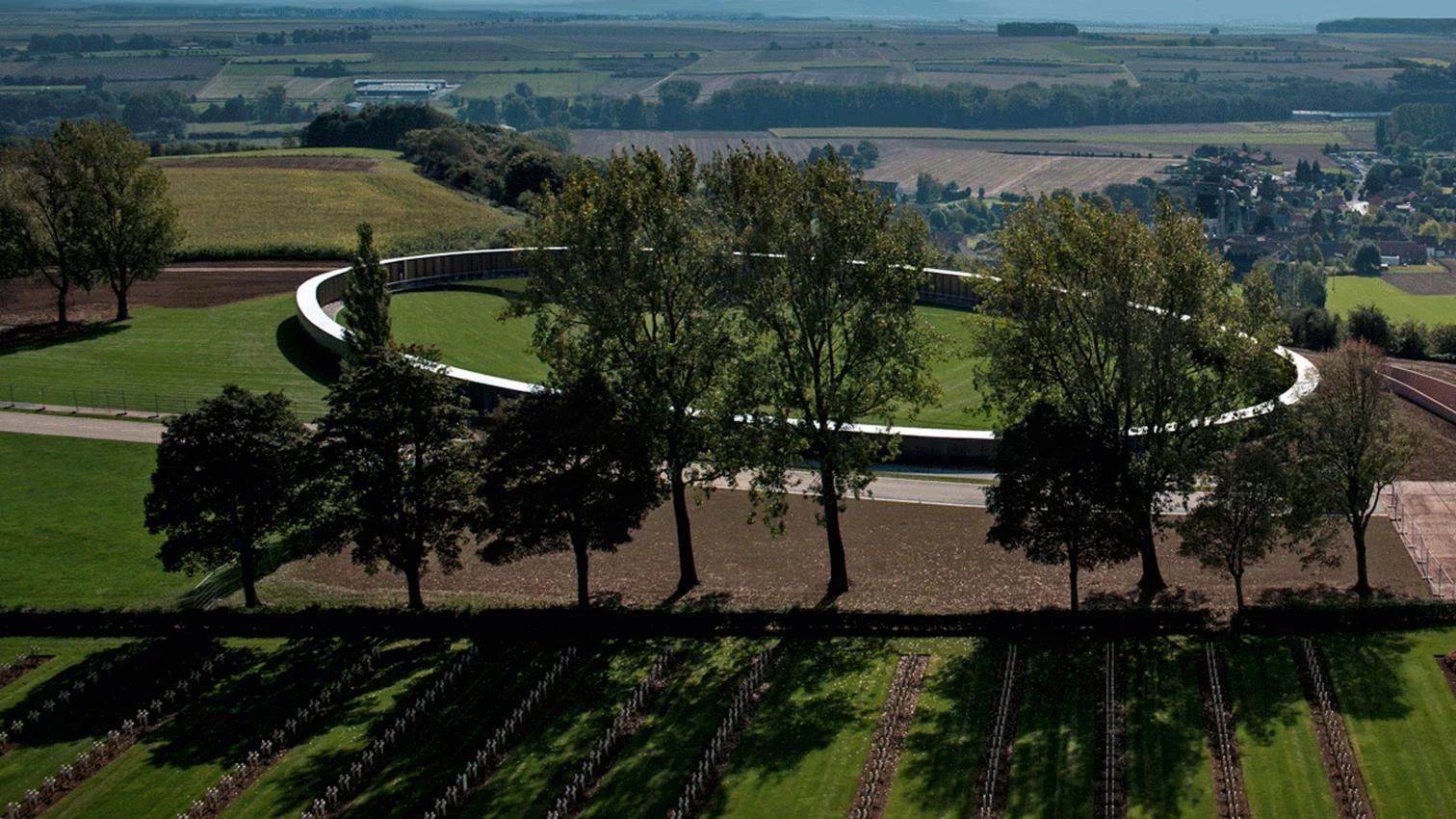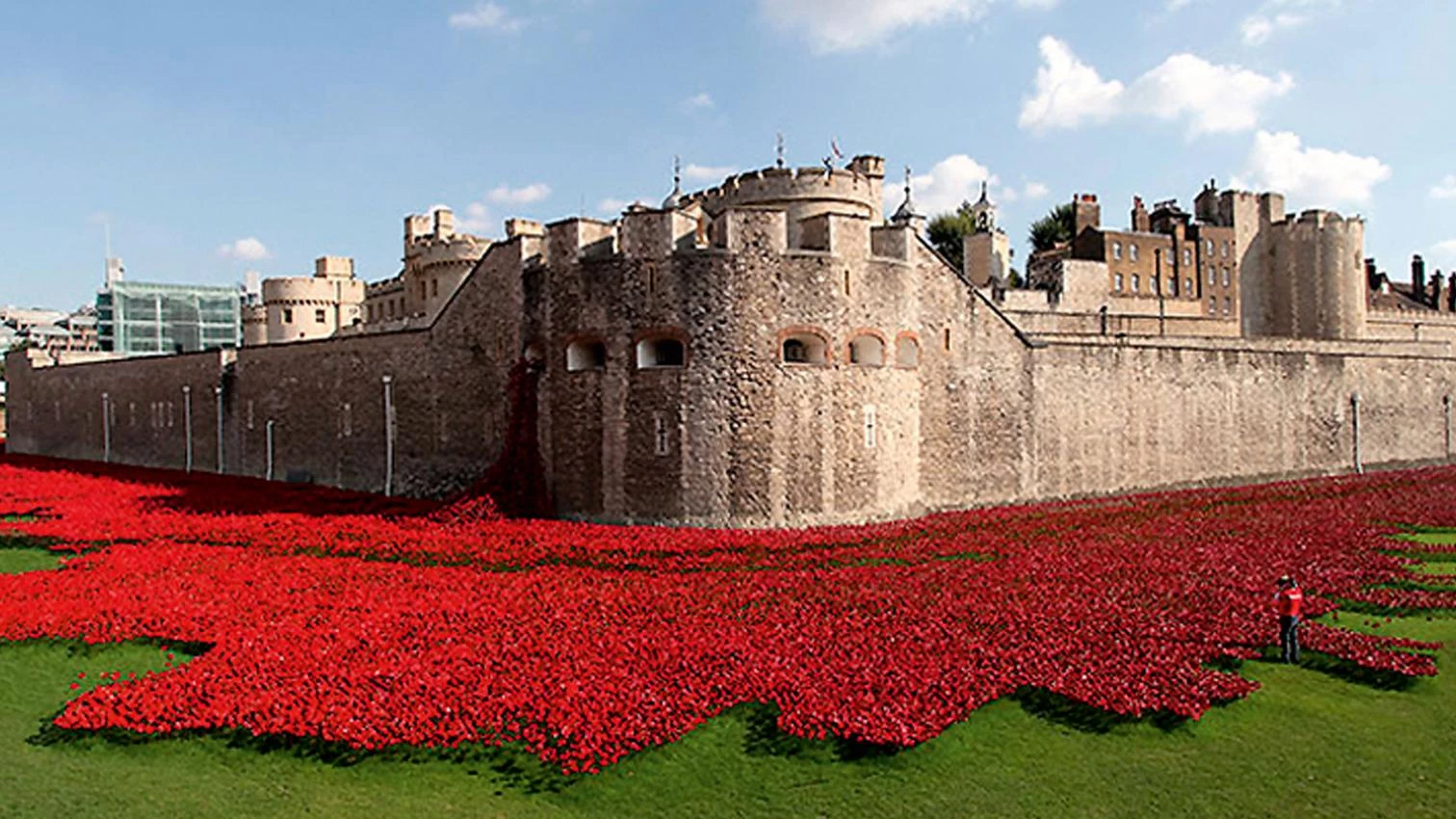
The centenary this year of the Great War ends with the inauguration of two memorials to that tragedy. The installation by the English artist Paul Cummins pours out of and surrounds the barbican of the Tower of London, presenting slightly over 800,000 ceramic poppies evoking with aesthetic subtlety all those who died for the British Empire during World War I. Each poppy is the size of a fist and attached to a two-foot metal stalk. Inspired in a poem of that period which associated the red color of the wild flower with the bloodshed of wartime, the monument is temporary, to disappear when the poppies, which have been sold at 25 pounds apiece, are handed over to their new owners. Equally subtle is the French architect Philippe Prost’s elliptical memorial at Notre Dame de Lorette, one of France’s largest military cemeteries, in the countryside outside the northern village of Ablain-Saint-Nazaire. Situated close to some of the war’s bloodiest battles, it is posed on what is called the colline sanglante. In alphabetical order and with no reference to rank or nationality, the names of 579,606 casualties are inscribed on the dark, copper-toned concrete panels of this 328-meter oval-shaped Ring of Remembrance.






